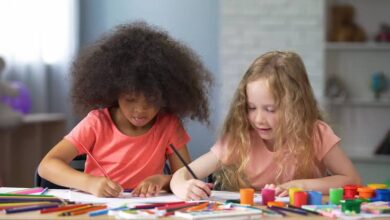Educational Updates
Inclusive Education: Strategies for Diverse Classrooms

Inclusive education is a fundamental approach that acknowledges and accommodates the diversity of students in classrooms. Creating an inclusive environment requires intentional strategies to cater to the varied needs of all learners. Here are effective strategies for implementing inclusive education in diverse classrooms:
- Understanding and Embracing Diversity:
- Celebrate differences in abilities, backgrounds, cultures, and learning styles.
- Foster a culture of inclusivity by promoting mutual respect, empathy, and understanding among students.
- Differentiated Instruction:
- Tailor teaching methods and materials to accommodate diverse learning needs.
- Provide multiple means of representation, engagement, and expression to cater to different learning styles and abilities.
- Universal Design for Learning (UDL):
- Implement UDL principles to create flexible and accessible learning experiences for all students.
- Use multimedia, varied assessments, and multiple modes of instruction to address diverse needs.
- Collaborative Learning Opportunities:
- Encourage collaboration and peer support within the classroom.
- Pair students with diverse abilities, fostering teamwork and creating an environment where students learn from each other.
- Individualized Education Plans (IEPs) and 504 Plans:
- Develop and implement personalized plans for students with specific learning needs.
- Regularly review and update these plans to ensure they align with the evolving needs of each student.
- Accessible Classroom Environment:
- Ensure physical accessibility with ramps, elevators, and other accommodations.
- Use inclusive language and visuals that represent a variety of cultures, backgrounds, and abilities.
- Sensory-Friendly Practices:
- Implement sensory-friendly practices for students with sensory sensitivities.
- Provide options for alternative seating, use sensory tools, and create a calming space for students who may need it.
- Teacher Professional Development:
- Equip educators with training and resources on inclusive teaching practices.
- Encourage ongoing professional development to stay informed about best practices in inclusive education.
- Regular Communication with Parents and Caregivers:
- Foster open communication with parents and caregivers to understand each student’s unique needs.
- Collaborate with families to create a supportive network that extends beyond the classroom.
- Promoting Social-Emotional Learning (SEL):
- Integrate SEL into the curriculum to support the emotional well-being of all students.
- Teach empathy, self-awareness, and effective communication to create a positive and inclusive social environment.
- Flexible Assessments:
- Implement a variety of assessment methods to allow students to demonstrate understanding in diverse ways.
- Provide options for alternative assessments for students with different learning styles or needs.
- Inclusive Extracurricular Activities:
- Encourage the participation of all students in extracurricular activities.
- Ensure that sports, clubs, and events are accessible and welcoming to students of all abilities.
In conclusion, inclusive education is a powerful means of creating vibrant, enriching classrooms. These strategies aim to cultivate an environment where every student feels supported, valued, and ready to excel, contributing to a more compassionate and understanding society.





